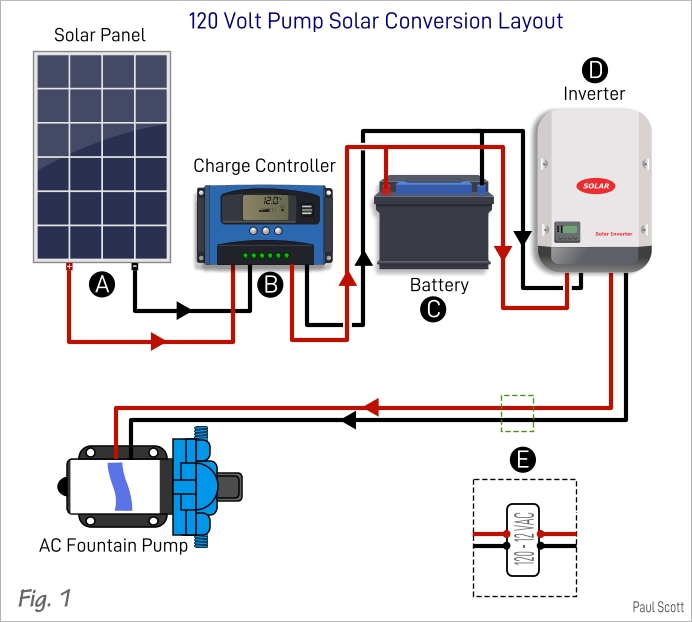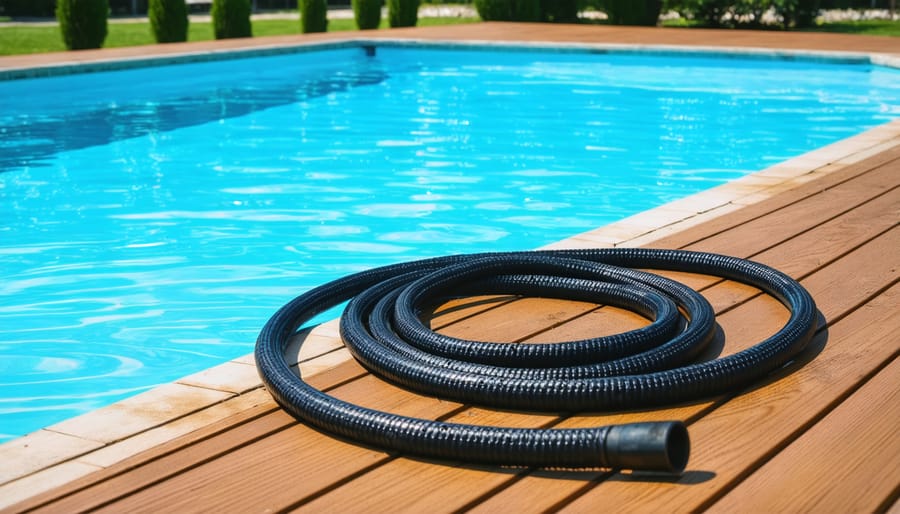What Size Solar Water Fountain Pump Do I Need
Updated:

When installing a solar fountain pump, correctly sizing the fountain pump is one of the first of several important considerations. If the pump is incorrectly sized, the results will be disappointing at best, or, at worst, even damage the fountain.
When considering pumps, solar or otherwise, there are two key factors to consider that influence performance. These are delivery rate and pump head height, both of which we will check out in detail a little later.
The best jump-off point when choosing the size for your solar water fountain pump is a clear idea of the fountains’ details. Knowing these details will allow you to make a canny choice of pump for any solar water fountains. For example, a large fish pond fountain will fail miserably if a birdbath-type solar water pump is installed.
On the other hand, a large, high-capacity fountain pump is likely to send a birdbath fountain into orbit. Probably taking the birdbath and its startled occupants with it to boot.
So, let us look at how to choose the right size solar water fountain pump for your needs.
The Solar Fountain Pump: Debunking a Myth
This is a good time to make one important distinction. Strictly speaking, “solar fountain pumps” don’t exist. They just aren’t a thing. Pumps for a solar water fountain are usually standard pumps. Unless, of course, they are supplied as part of a dedicated solar kit. Even then they can be run from an AC source as well.
That said, there are replacement motors available for solar fountain kits. Then again, they could run from a suitable transformer plugged into an AC mains power source. The only true solar pumps are the smaller, all-in-one integrated birdbath types.
Delivery Rate and Pump Head Height
As mentioned earlier, these are the two important performance parameters for any solar water pump. This goes for ground-mounted or submersible pump types.
Delivery Rate
The delivery rate refers to the maximum amount of fluid electric pumps can move over time. It is usually expressed as a gallon per hour (GPH) or liter per hour (LPH) rating.
Fountain Pump Head Height
Pump head height, or more commonly simply pump head, refers to the height the pump can move fluid vertically. This rating is typically expressed in inches or feet/centimeters and meters. This may also be referred to as maximum lift.
To summarize, if our 50 GPH solar water fountain pump has a 60-inch head rating, one can expect the following. It will empty the 50-gallon tank in an hour while sending the water 60 inches vertically into the air.
So how does all this tech stuff affect your choice of a solar fountain pump?
Choosing a Solar Fountain Pump Size: the Specs
To ensure you choose an appropriate pump, you need to have a clear idea of the desired end result. To do that, you have to know the specs of the fountain equipment you have or intend to install.
Replacing an Existing AC Mains Pump
This is the easy one. If you already have a pump installed on an existing fountain, you are more than halfway there. You simply have to decide whether the present fountain works well and delivers the results you want.
If it is, simply use the rating (GPH and maximum lift) of the existing pump as a guide when buying a solar replacement. If not, you can either increase or decrease the solar replacements capacity accordingly.
Installing a Solar Pump on a New Fountain
This one can be tricky, as you may be working with a bunch of unknowns. And this is where all the previous techy stuff comes into the picture.
Bought Water Fountains
If you have bought a ready-built fountain or water feature as pictured below, they will usually come with a set of pump requirements. This makes it fairly easy to choose an appropriate pump.

Rolling Your Own
If, on the other hand, you decide to build your own custom fountain, things can get a bit more complex. Using standard fountain fittings certainly can make things easier as many of these will also come with water-feed specifications.
However, if you decide to make your own fountain fittings, calculations or trial and error now come into play. That said, you should be able to base your choice on existing pond pump designs that are close to your own. There are also many online resources that can help you work out the desired delivery and maximum lift requirements.
Calculating the Size for Your Solar Water Fountain Pump
There are two important constants in this process. The first is the size of the fountain outlet and the height of the outlet above the pump location.
Required Pump Delivery Rate
The size, or diameter, of the fountain head or outlet, will determine the required GPH delivery rate of the pump. To make this part of the calculation, measure the diameter size of the outlet. This is how it’s done once you have that figure.
Take the fountain head diameter and multiply it by 100. The result is the amount of water the pump needs to deliver. Here is an example:
- Fountain head diameter = ½ inch or 0.5 inch
- 0.5 x 100 = 50
- The required delivery rate of the pump is then 50 GPH.
Required Pump Maximum Lift
Now you will have to measure the total height from the fountain outlet to the pump position. This measurement is the minimum head height rating of the pump. To get a good fountain spray height, the pump should have a maximum lift rating of at least 1 ½ times that distance. This is irrespective of whether it is a submersible pump or ground-mounted. For example:
- The fountain height is 45 inches
- 45 x 1.5 = 67.5 inches
- So a suitable head height rating for your pump should be around 70 inches.
This leaves you with a requirement of a 50 GPH pump with a 70-inch head.
Fine-tuning Your Solar Fountain Pump
If you have made the previous calculations correctly, your fountain should work pretty well. However, if the delivery is a little too strong or too weak, it’s fairly easy to address by adjusting the size of the fountain outlet. Again, this may take some trial and error.
- If the flow is too strong, increase the size of the fountain outlet.
- If the flow is too weak, reduce the size of the fountain outlet.
Matching Your Solar Panel and Components to Your Pump
Solar powered fountain pumps are often supplied as kits that include the pump and all solar components. If you are going to put together your own solar source, then you have to make sure it’s up to the task at hand, particularly the solar panel.
This is a complex subject deserving of an article on its own but as an example, a 12 volt DC, 105 GPH pump with a 55-inch head can run directly from a 7-watt solar panel. If you have a high voltage pump, things start to get a little complicated and additional components are required. The same goes for a fountain that will run 24/7.
Illustrated below is a typical solar setup for both low and high-voltage AC pumps intended for continuous operation.

Fortunately, a solar panel and equipment salesman would be able to advise you on the specs of your solar setup. There are also many online resources where you can find valuable advice.
In Closing
We hope that this guide will be useful in helping you make your choice of fountain pump size. If you have any questions or suggestions, please feel free to use the comments section below.










